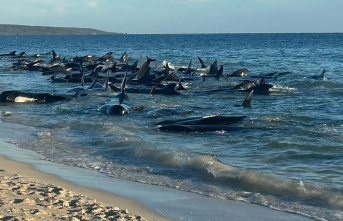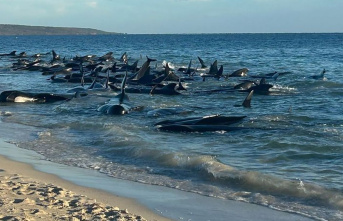According to a southern California fossil study, the first saber-toothed cat, which is a general term that describes many species of mammals with large canines, lived 27 millions years before cats with such fangs. The article was published in the journal 'PeerJ. According to the investigators, the lower jaw and its teeth are attributed to a new species carnivore that is about the same size as a wild cat. They have named it 'Diegoaelurus vanvalkenburghae' after the San Diego county in which it was discovered, and Blaire Van Valkenburgh, paleontologist.
Today, it is common to be able to eat only meat. This is also known as hypercarnivore. Tigers do it, polar bears can do it. You may have a hypercarnivore in your home if you have a cat. However, 42 million years ago mammals discovered how to survive on just meat," says Ashley Poust, a San Diego Museum of Natural History researcher whose collection this fossil is.
"Diegoaelurus vanvalkenburghae" is not a feline. It's a machaeroidino mammal, a carnivorous mammal, that lived between 56-34 million years ago in the Eocene. Pedro Castanos, a paleontologist from the Aranzadi Science Society who wasn't involved in the study, says that the first mammals appeared in the Cretaceous at the end of dinosaur age. However, they were still small. Mammals began to diversify only after the great extinction of 66 million years ago.
The authors point out that Machaeroidines, a mysterious group, is not closely related with living carnivores and saber-toothed Tigers. Although all evidence suggests that they could be the ancestors to felines, there is not a clear phylogenetic line. Diegoaelurus vanvalkenburghae, although it is a saber toothed cat, is not one. It is however an early example of a hypercarnivorous predator.
Ashley Poust, researcher, with the lower jaws of the new species. Next to a skull from a saber toothed tiger ('Smilodon"), Poust is shown. San Diego Natural History Museum
It is the lower jaw that is most similar to the later saber toothed felines. An expert can see the saber teeth in it. This is according to the Aranzadi Science Society paleontologist. He considers it an exceptional fossil. The true saber-toothed cats were approximately the same size as a lion or tiger and lived between 15 and 10,000 years ago.
Primitive tapirs and small rhinos lived in trees in California's humid, mid-Eocene, where they were pushed further south by tectonic plates movements. Castanos believed that "Diegoaelurus", a predator of small herbivores, was the best choice in this environment.
Poust says that nothing comparable existed in mammals. Poust believes "Diegoaelurus" and its few relatives are the first feline to eat exclusively meat. They have saber teeth in the front, and scissor-shaped molars butchers at the back. Researchers say this animal and its relatives are a type of evolutionary experiment. It represents a first attempt to be a hypercarnivore, which is a lifestyle true cats now follow.












